Top Biofertilizers for Yield Increase and Stress Tolerance
As agriculture faces increasing environmental pressures—especially drought, salinity, and nutrient degradation,biofertilizers have emerged as an essential component of sustainable crop management. By leveraging beneficial microorganisms and natural bioactive compounds, biofertilizers help improve soil health, nutrient availability, and plant resilience. This article explores key biofertilizer types, their mechanisms under stress conditions, and practical on-farm adoption guidelines. It also integrates recent findings on yeast-derived peptides, amino acids, and nucleotides—important biological molecules increasingly used as components in modern sustainable formulations.
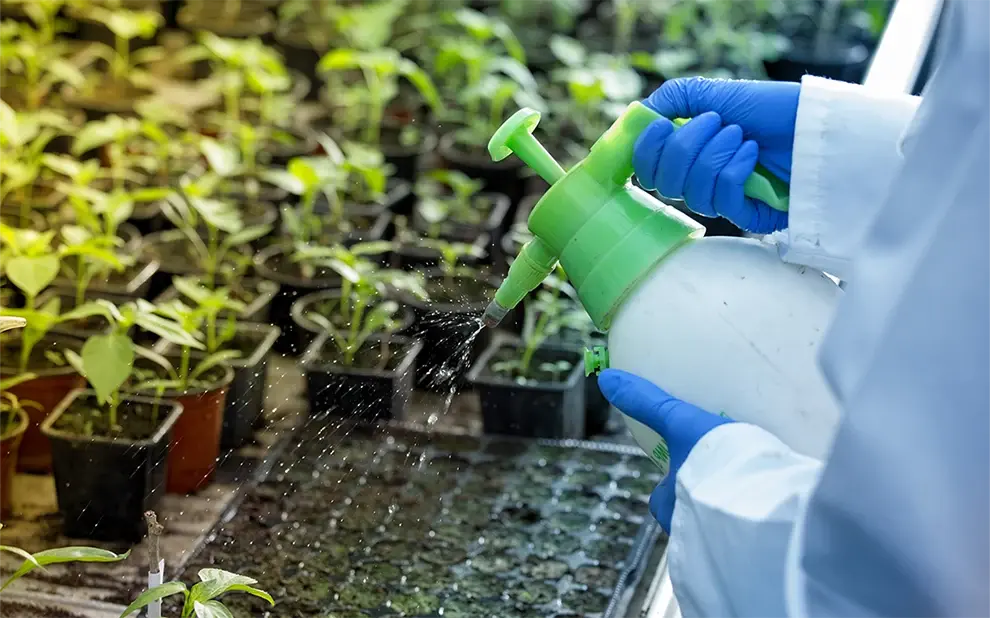
How Biofertilizers Improve Stress Tolerance in Crops
Drought and saltiness are two of the most critical abiotic stresses influencing trim generation around the world. Luckily, a few biofertilizers have illustrated surprising viability in moderating these challenges and moving forward to increase yield under antagonistic conditions.
Drought-Tolerant Biofertilizers
Arbuscular Mycorrhizal Fungi (AMF)
AMF expand the effective root area through extensive hyphal networks, enabling plants to access deeper water and bound nutrients. Numerous studies show AMF-treated crops maintain higher photosynthesis rates and biomass under water deficit conditions.
Plant Growth-Promoting Rhizobacteria (PGPR)
PGPR such as Bacillus subtilis and Pseudomonas putida help plants cope with drought by producing osmoprotectants, antioxidants, and growth-regulating metabolites. These bacteria also stimulate root elongation, improving water acquisition.Plant Growth-Promoting Rhizobacteria (PGPR)
Trichoderma species: These versatile fungi not only enhance plant growth but also induce systemic resistance to drought stress. Plants inoculated with Trichoderma often exhibit improved water use efficiency and biomass production under water-limited conditions.
Salinity-Tolerant Biofertilizers
Halotolerant PGPR
Salt-adapted strains of Bacillus and Pseudomonas produce exopolysaccharides that bind sodium ions, reducing their uptake by plants. They also help maintain ion homeostasis within plant tissues.
Azospirillum brasilense
A nitrogen-fixing bacterium known to improve root structure and osmotic adjustment, enabling crops to tolerate moderate to high salinity.
Algal and Seaweed-Based Inputs
Although not classical biofertilizers, seaweed extracts contain natural polysaccharides, betaines, and antioxidants that regulate osmotic balance and help plants maintain growth under salt stress.
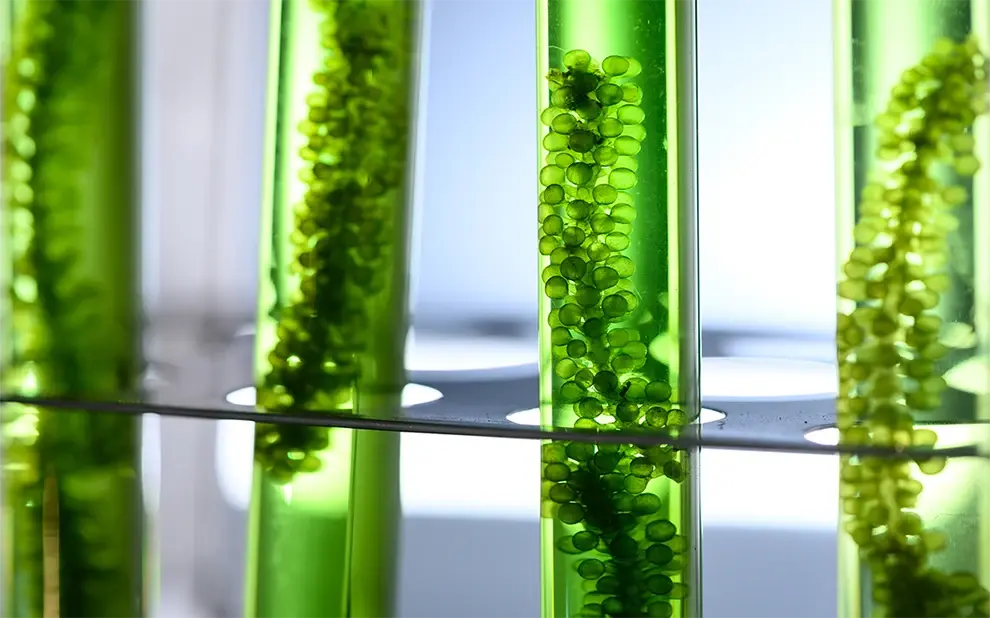
Role of Yeast-Derived Peptides, Amino Acids, and Nucleotides
Recent studies have shown that yeast-derived oligopeptides, free amino acids, and nucleotides can complement microbial biofertilizers. These molecules enhance cellular repair, strengthen root activity, and support stress signaling pathways. For example:
- Small peptides can modulate plant defense and stress-response signaling.
- Amino acids improve nutrient assimilation and reduce metabolic burden during stress.
- Nucleotides support cell division, membrane repair, and early recovery after drought or salinity exposure.
These bioactive compounds are increasingly incorporated into modern biostimulant and biofertilizer formulations to provide a multi-layered resilience effect without relying on synthetic chemicals.
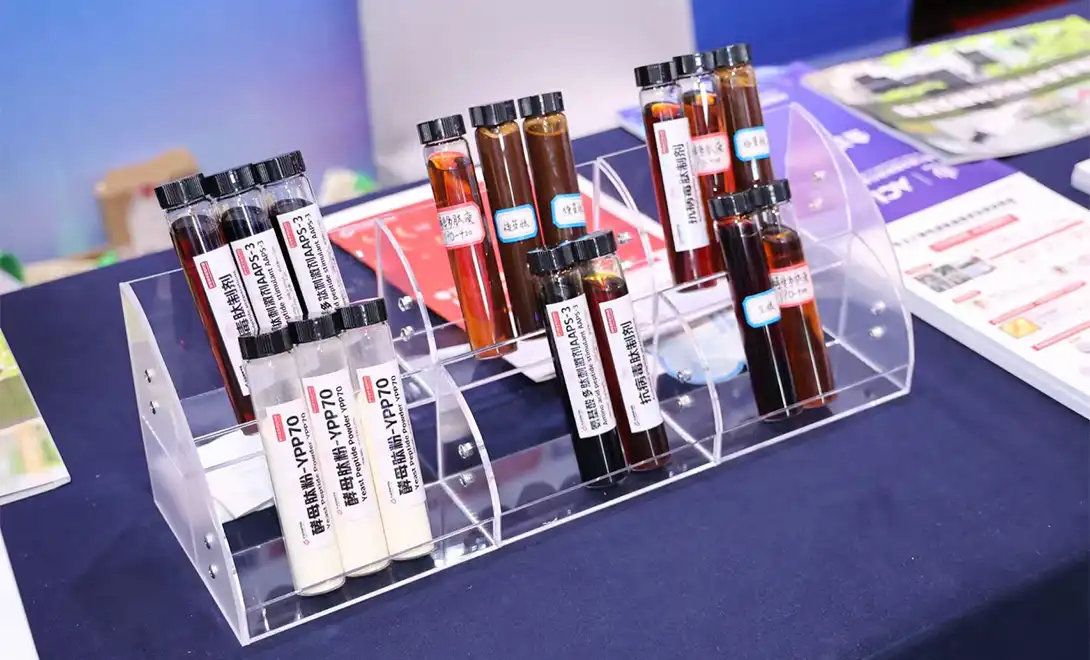
Key Types of Biofertilizers and Their Functions
Understanding the major groups of biofertilizers helps farmers select the most appropriate solutions for their fields.
Rhizobacteria
Rhizobacteria are beneficial microorganisms that colonize the rhizosphere—the soil’s root zone specifically impacted by root exudates. These bacteria play a crucial role in plant growth and stress tolerance.
Key types and benefits:
- Nitrogen-fixing bacteria (e.g., Rhizobium, Azotobacter): Enhance nitrogen availability to plants
- Phosphate-solubilizing bacteria (e.g., Bacillus, Pseudomonas): Increase phosphorus uptake
- Potassium-solubilizing bacteria: Improve potassium availability
- Plant growth-promoting rhizobacteria (PGPR): Produce phytohormones and siderophores, induce systemic resistance
Mycorrhizae
Mycorrhizal fungi form beneficial associations with plant roots, creating an extensive network that enhances nutrient and water uptake. These fungi are especially beneficial for improving plant resilience to various environmental stresses.
Types and advantages:
- Arbuscular mycorrhizal fungi (AMF): Most common type, beneficial for a wide range of crops
- Ectomycorrhizal fungi: Important for many tree species
- Enhanced nutrient uptake, especially phosphorus
- Improved water relations and drought tolerance
- Increased resistance to soil-borne pathogens
Algal inoculants
Algal-based biofertilizers—primarily derived from blue-green algae (cyanobacteria) and seaweed extracts—offer unique benefits for crop production and stress tolerance.
Key features:
- Blue-green algae (e.g., Anabaena, Nostoc): Nitrogen fixation, especially beneficial for rice cultivation
- Seaweed extracts (e.g., Ascophyllum nodosum): Rich in plant growth regulators and stress-tolerance compounds
- Enhance soil structure and water-holding capacity
- Stimulate root growth and nutrient uptake
- Improve plant tolerance to abiotic stresses (salinity, drought, temperature extremes)
When selecting biofertilizers, it’s important to consider the specific crop requirements, soil conditions, and environmental challenges. Often, a combination of different types of microbial inoculants can provide synergistic benefits, leading to optimal plant growth and stress resilience. Additionally, the quality and viability of the microbial strains used in biofertilizer formulations are critical for ensuring their effectiveness in field conditions.
![]()
On-farm adoption: timing, rates, and quality checks
To maximize the benefits of biofertilizers, proper application practices are essential.
Timing of application
- Seed inoculation: Effective for rhizobial and PGPR products
- Soil application: Recommended for mycorrhizae and microbial consortia
- Foliar application: Suitable for seaweed extracts and certain PGPR
- Seedling root dipping: Enhances early colonization in transplanted crops
Synchronization with active root growth stages ensures maximum colonization and nutrient uptake.
Application rates
Rates depend on soil microbial activity, crop type, environmental conditions, and formulation form (liquid, powder, granular). Starting with recommended rates and adjusting based on field evaluation is generally advised.
Quality checks and storage
- Purchase biofertilizers with verified microbial counts
- Store between 4–25°C, away from direct sunlight
- Use before expiration
- Conduct simple farm-level viability checks when possible
Good storage practices are essential because microbial viability directly affects field performance
Carefully considering application timing, rates, and quality control measures helps farmers optimize biofertilizer benefits and integrate them effectively into crop management practices. Regular monitoring and adjustment of biofertilizer practices—based on crop performance and soil health indicators—will help ensure long-term success in boosting yields and stress tolerance.
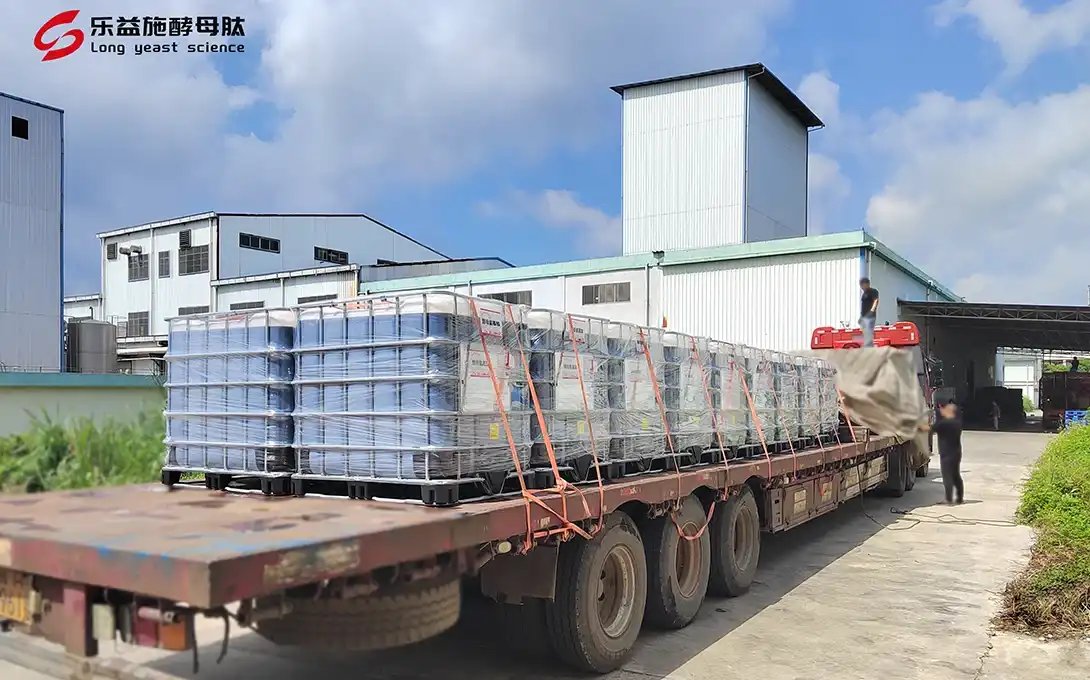
Conclusion
Biofertilizers represent a powerful and sustainable approach to improving crop yields and stress tolerance. Whether through rhizobacteria, mycorrhizal fungi, cyanobacteria, or bioactive compounds such as yeast-derived peptides, amino acids, and nucleotides, these natural tools support healthier soils and more resilient crops.
As agricultural systems move toward reduced chemical dependency and higher environmental sustainability, integrating biological solutions will play a central role. Understanding their mechanisms, proper application methods, and compatibility with bioactive additives allows growers to optimize both productivity and long-term soil health.
For high-quality biofertilizer solutions, LYS Biotech provides a comprehensive line of innovative products backed by over 70 years of expertise in yeast protein technology. Our proprietary patented technologies—including nucleotide-based immune response agents and small-molecule peptides—deliver superior crop growth and stress tolerance. Backed by strict quality control and uncompromising product integrity, LYS Biotech is your trusted partner for sustainable agriculture.
FAQs
Q1: How do biofertilizers differ from chemical fertilizers?
A: Biofertilizers contain living microorganisms that upgrade supplement accessibility and take-up by plants, whereas chemical fertilizers are engineered compounds that specifically supply supplements. Biofertilizers work by improving soil wellbeing and plant-microbe intuitive, advertising long-term benefits with negligible environmental impact.
Q2: Can biofertilizers completely replace chemical fertilizers?
A: Whereas biofertilizers essentially diminish the requirement for chemical inputs, they regularly work best as part of an coordinated supplement administration procedure. In numerous cases, a combination of biofertilizers and decreased chemical fertilizer applications can optimize trim nutrition and soil health.
Q3: Are biofertilizers effective in all soil types?
A: Biofertilizers can be compelling in different soil types, but their execution may vary. Variables such as soil pH, natural matter substance, and local microbial populations can impact their adequacy. Soil testing and master interviews can offer assistance in deciding the most reasonable biofertilizer approach for particular soil conditions.
Innovative Biofertilizers for Enhanced Crop Performance | LYS
Discover LYS Biotechnology's cutting-edge biofertilizers solutions, specifically designed to enhance crop yields and stress tolerance. Leveraging our proprietary yeast-based enzymatic technology, our products deliver exceptional performance in promoting plant growth and strengthening resilience. Whether you face challenges like drought, salinization, or nutrient deficiencies, our expert team will help you identify the most suitable biofertilizer solution tailored to your needs.Do not miss out on the opportunity to revolutionize your trim administration procedure. Contact us today at alice@aminoacidfertilizer.com to learn more about our products and how they can benefit your agricultural operations. Let LYS Eco be your partner in achieving sustainable and profitable farming!
References
1. Kumar, A., & Verma, J. P. (2018). Does plant-microbe interaction confer stress tolerance in plants: A review? Microbiological Research, 207, 41-52.
2. Bhardwaj, D., Ansari, M. W., Sahoo, R. K., & Tuteja, N. (2014). Biofertilizers function as key players in sustainable agriculture by improving soil fertility, plant tolerance, and crop productivity. Microbial Cell Factories, 13(1), 66.
3. Rouphael, Y., & Colla, G. (2020). Editorial: Biostimulants in Agriculture. Frontiers in Plant Science, 11, 40.
4. Vessey, J. K. (2003). Plant growth-promoting rhizobacteria as biofertilizers. Plant and Soil, 255(2), 571-586.
5. Berruti, A., Lumini, E., Balestrini, R., & Bianciotto, V. (2016). Arbuscular Mycorrhizal Fungi as Natural Biofertilizers: Let's Benefit from Past Successes. Frontiers in Microbiology, 6, 1559.
6. Sangha, J. S., Kelloway, S., Critchley, A. T., & Prithiviraj, B. (2014). Seaweeds (Macroalgae) and their extracts as contributors of plant productivity and quality: The current status of our understanding. Advances in Botanical Research, 71

Tell us your needs — we’ll provide the right solution for your crops and markets.
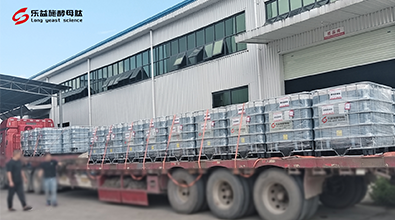
Innovating Agriculture with Yeast-Derived Amino Acid Peptides


